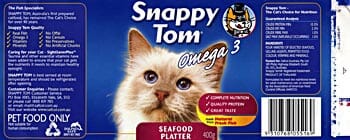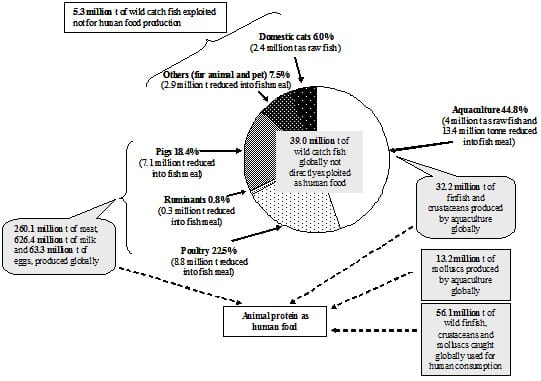Industrial production of fish meal and fish oil are based on what is termed as a reduction process, using smaller sized fish species commonly termed ‘trash fish’, although ‘low-value’ fish is probably a more accurate description. In essence, nearly 25 per cent of the global marine fish catch is used for these purposes, predominantly consisting of species such as the Peruvian anchovy, capelin, menhaden and sand eel, amongst others.

There is a growing view that the fish resources used in the reduction industry should be channeled for feeding humans directly in developing countries; an ethical stance that is gaining increasing momentum. An alternate interpretation of this view is that valuable protein sources should not be used to convert to higher cost proteins that are inaccessible to the poor.
In aquaculture fish meal and fish oil usage is mostly for the culture of high valued species such as salmon and shrimp, which together account for about 16 per cent of the global aquaculture production, and to a much lesser extent other finfish species. Similarly, a large quantity of fish meal is used in feeds for other livestock, mainly poultry.
Aquaculture is commonly condemned, in spite of the fact that it provides millions of livelihood opportunities in poor rural communities, contributes to food security and poverty alleviation, and currently provides approximately 50per cent of total global food fish consumption. However, what seems to have gone unnoticed by its critics is that a very substantial quantity of fish is used for non-human food production purposes, principally for pet food production, and an unknown but a significant quantity for feeding animals farmed for the fur trade.
It is in the above context that Professor Sena S De Silva and his colleague Dr. Giovanni Turchini set about to estimate the quantities of fish used in the above sectors. They were able to make a rather conservative estimate of the use of fish in the pet food industry, in particular cat feeds, covering only certain parts of the globe (for example China was excluded). The results were staggering, very conservatively estimated at 5.3 million tonnes, almost certainly a gross underestimation (see Figure). The detailed analysis is published in the Journal of Agriculture and Environmental Ethics (2008; Volume, 21, pp. 459–467.
This article generated a lot of coverage in the press and in particular in the Australian media as the study was primarily based on basic information on cat feeds from Australia. The study demonstrated that on average an Australian household cat consumes more fish than a human.

The main point the authors raised was that it is not a question of pets versus aquaculture - human food - but the fact that a common biological resource that could be channeled (at least a good proportion of it) for direct food consumption is being used for non-human food production and that there needs to be a global dialogue and a consensus with regard to the sharing and channeling of this resource for various purposes. Furthermore, that aquaculture, which uses fish meal and fish oil for producing human food should be considered in context of other uses of these resources and not be singled out.
NACA’s mandate is to facilitate sustainable rural aquaculture development involving millions of small scale farmers, who own, operate and manage relatively small units, which are essentially the backbone of Asian aquaculture and account for over 85 per cent of global production. Although Asian aquaculture accounts for a significant usage of global fish meal production its use of fish oil is relatively small, and the returns in production terms for both are considerably higher for those species / species groups cultured in Asia (Figure 2). Accordingly, it would be incorrect to extend the same arguments with regard to such usages “lock, stock and barrel” to Asian aquaculture. However, NACA does accept the need to reduce use fish meal and fish oil in Asian aquaculture and are taking steps in conjunction with its member countries in this direction.
It is in the above context that NACA calls for a global dialogue on the use of fish resources in the reduction industry as well as on fish meal and fish oil usage in aquaculture.

November 2007

